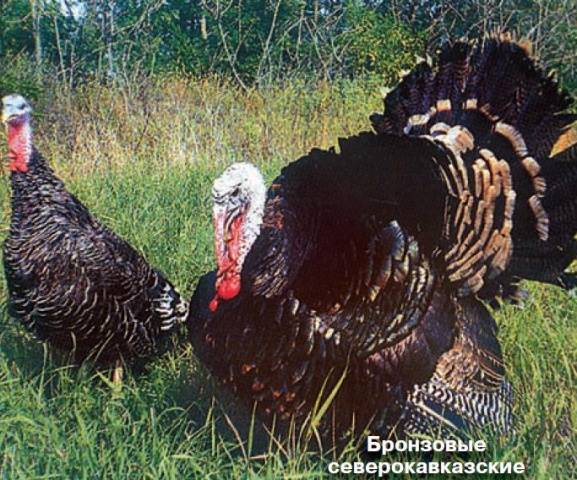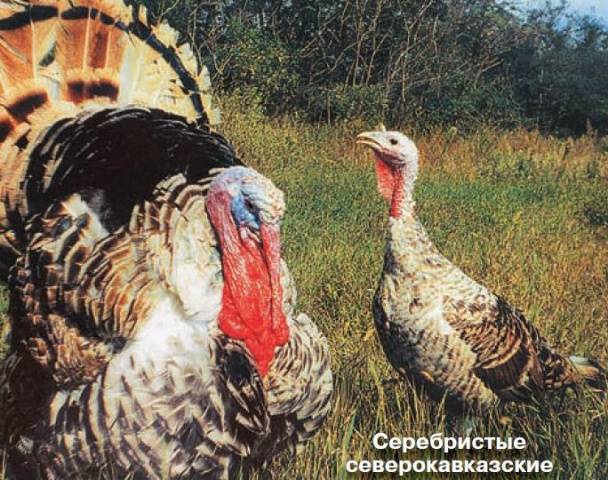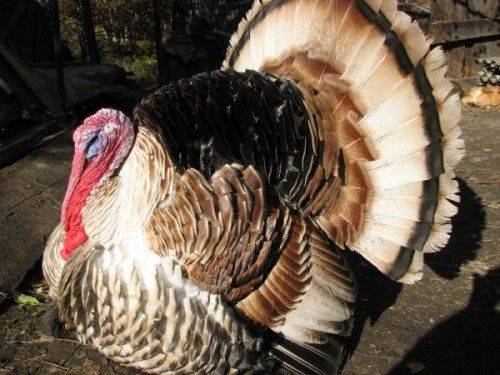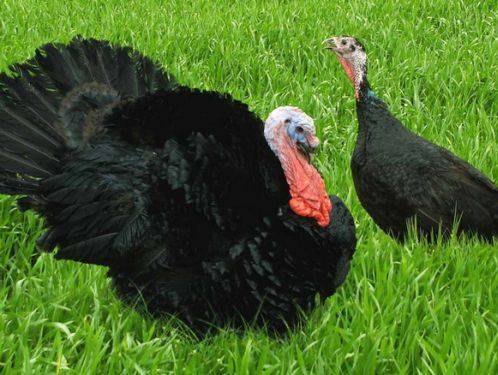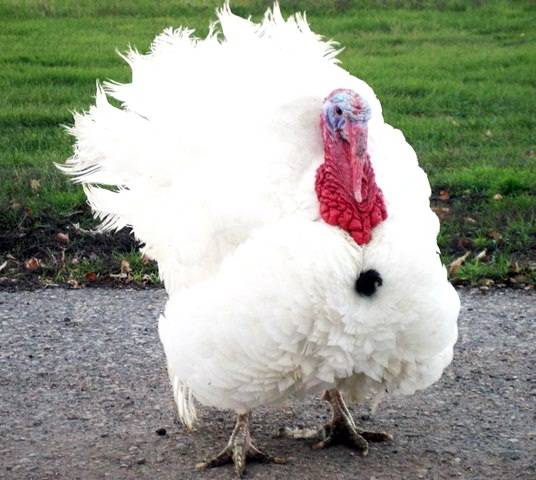Content
Since about the time that wild turkey was slaughtered and cooked on the first Thanksgiving, birds of this species have been raised for meat. Therefore, no one specially bred egg-bearing breeds of turkeys, since usually you have to choose: either a lot of meat or a lot of eggs. Birds that would gain a lot of body weight, simultaneously bringing 300 eggs a year, simply do not exist in nature. As there is no fat, but dairy breed of cows.
When choosing turkeys, you will not have to choose between egg production and meat qualities, but between fast weight gain and endurance. Modern meat crosses gain weight very quickly, but they are quite demanding in terms of keeping conditions and feed. Many local turkeys are much smaller, grow longer, but they are able to live on grazing in the summer and do not require a special microclimate in the chicken coop.
The most hardy breed of turkeys, of course, is the progenitor of all domestic breeds - the wild turkey, which is still interbred with domesticated livestock, giving birth to the second in terms of endurance offspring. But since there is no wild turkey in Eurasia, it makes sense to pay attention to turkey breeds that have long been acclimatized in the conditions of the South of Russia.
The breeds of turkeys, formed on the basis of crossing the local turkeys of the Caucasus with productive meat breeds, although they lost some weight in comparison with the parent meat breed, more than compensated for the loss of a couple of kilograms of the ability to survive in not very favorable conditions, acquired from local poultry. Moreover, the new breeds of North Caucasian turkeys are larger than the original local ones.
North Caucasian bronze
The local breed, which was bred in the Caucasus until the second half of the twentieth century, was distinguished by a very low live weight (3.5 kg). At the same time, she could survive in very extreme conditions. After the Second World War, it was decided to increase the meat mass of local turkeys. Local turkeys were crossed with American meat turkeys: bronze broad-breasted.
Bronze broad-breasted has a significantly higher body weight and higher egg production.
As a result of breeding work in 1956, a new breed of turkeys was registered - North Caucasian bronze.
There are two lines in the North Caucasian bronze:
- Lightweight. Adult turkeys weigh 11 kg, turkeys -6. The slaughter weight of turkeys of this line is more than 4 and 3.5 kg, respectively;
- Heavy. The weight of adult turkeys is 18, turkeys are 8 kg. Slaughter weight at 4 months 5 and 4 kg.
Both lines, under favorable conditions, become sexually mature at 8-8.5 months, with unfavorable conditions at 8.5-9 months. Egg production of turkeys is 70 eggs per year with a fertilization rate of about 82% and hatchability of turkey poults from fertilized eggs up to 90%.
Birds begin to fly at about 9 months, laying period lasts about 5 months.
The North Caucasian bronze is distinguished by high vitality and can be bred not only in the south of Russia and Central Asia, but also in other regions with a temperate or continental hot climate.
From the local breed of turkeys, the North Caucasian bronze inherited a high resistance to infections, which is very important for the owner of a personal backyard. Unfortunately, the population of the North Caucasian bronze is declining due to the introduction broiler turkey breeds.
North Caucasian silver
After the emergence of interest in turkey breeding, not only in industrial complexes, but also in private plots, there was a need to breed a turkey with colored plumage and good meat qualities.
The turkey had to be early maturing, gain weight well, be adaptable to keeping in the garden and have an interesting appearance.
The new breed was bred on the basis of the Uzbek fawn turkey breed and the American white broad-breasted.
The bred turkeys were supposed to inherit the ability to reproduce in vivo, meat qualities and plumage color.
When breeding, introductory crossing with white broad-breasted ones, breeding in oneself, hard culling by color, moderate by economic characteristics was used.
The result of breeding work was a breed of turkeys with good reproductive ability and a rate of gain in live weight. Adult turkeys weigh 11.5 kg, turkeys - 6. At 4 months of age, turkeys weigh 4 - 4.8 kg.
The main advantage of the North Caucasian silver is a colored opaque feather with white down, due to which both the live turkey and the carcass have an attractive appearance. The turkeys have a very interesting color, and the carcass does not have black hemp in the skin, giving it a repulsive appearance.
Since the North Caucasian silver was created with a priority for breeding in private farms, it has an increased embryonic resistance and good viability of turkeys after hatching. It is capable of reproduction in natural conditions (the incubation instinct is developed) and in an incubator.
Today the breed is quite homogeneous and retains its characteristics for several generations, which indicates its stability.
You can compare a photo from an old magazine and a modern turkey of the North Caucasian silver breed.
Uzbek fawn
The unpretentious Uzbek fawn breed of turkeys is highly resilient. Turkeys are able to get food on pastures with practically no additional feeding and raise their entire brood to an adult state. These advantages make the Uzbek fawn turkey breed a good choice for a private backyard, due to which it is bred not only in Uzbekistan, but also in the North Caucasus and Tatarstan.
But the breed has many disadvantages: low egg production (65 eggs per cycle), low egg fertilization, low live weight of birds. An adult turkey weighs 10 kg, a turkey about 5 kg. Young growth at 4 months gains 4 kg, but usually they are raised to adulthood. The quality of the breed's meat is also low.
These shortcomings served as prerequisites for the breeding of the North Caucasian silver turkey, which took endurance and unpretentiousness from the Uzbek breed, and from the broiler meat breed, good quality meat and quick weight gain.
Black Tikhoretskaya
The breed is of the light type. Bred in the 50s of the last century by crossing local breeds of turkeys with bronze broad-breasted. At first, the breed was called "Kuban Black". Turkeys of this breed have a pure black plumage without brown feathers, like the bronze varieties, but also with a green tint.
Adult turkeys weigh up to 11 kg, turkeys up to 6. In principle, this breed gives a good slaughter yield of meat (60%). For comparison: meat breeds of turkeys give a slaughter yield of 80%. At four months, young animals weigh up to 4 kg, but few people slaughter them at this age. Usually raised to adulthood.
Turkeys are good brood hens, albeit with an average egg production of 80 eggs per year. The hatchability of turkey poults from eggs is 80%.
It is bred in the central and southern parts of Russia. The breed did not receive wide distribution due to its too high adaptability to the breeding region. Its advantages include the ability of turkeys to live in non-insulated rooms before the cold weather. And the disadvantages are great mobility, due to which the breed requires a mandatory spacious walk. Often, black Tikhoretski are used to breed new breeds of turkeys.
The best breeds for broiler breeding are Big turkeys of the British company BYuT. More precisely, these are broiler numbered industrial crosses Big - 6, Big - 8, Big - 9.
The shoes are of the heavy type and do not differ in appearance. Their preference is given to white plumage so that the carcass has an attractive appearance. The turkey poultry of these crosses reaches a weight of 5 kg already at 3 months, and it can be sent for slaughter. Adult turkeys can weigh up to 30 kg.
But it should be borne in mind that these turkeys cannot be called unpretentious. If it is not possible to provide them with high-quality feeding and maintenance, it is better to stay on less productive, but more unpretentious breeds. In addition, according to the owners of Bigs, a large carcass is still very difficult to sell. They themselves prefer to slaughter turkeys with a weight of 5 to 10 kg.
Reviews of the owners of domestic turkeys
Conclusion
When choosing a turkey breed, a beginner can be advised one of the North Caucasian turkeys, as a middle ground between completely unpretentious, but unproductive local birds and very productive, but pampered and demanding meat crosses.
